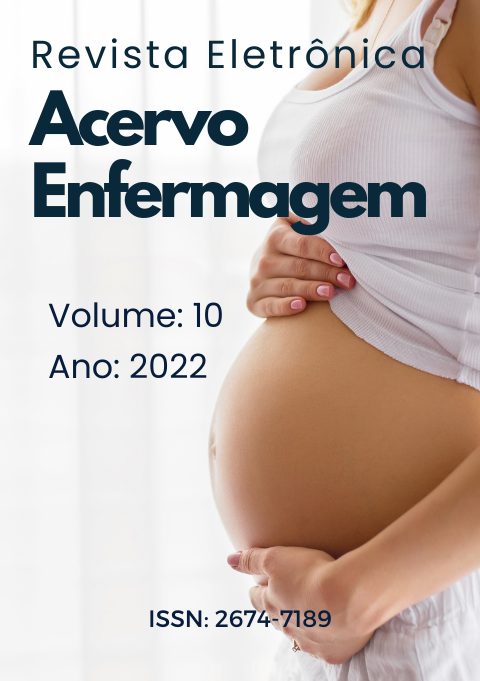O desenvolvimento de tumores cerebrais em idade pediátrica
##plugins.themes.bootstrap3.article.main##
Resumo
Objetivo: Reunir informações recentes sobre tumores cerebrais na idade pediátrica, trazendo dados sobre os tipos mais comuns, descobertas sobre seu desenvolvimento, consequências em qualidade de vida, tratamentos e diagnósticos. Revisão bibliográfica: Os tumores malignos pediátricos geralmente afetam as células do sistema hematopoiético e os tecidos de sustentação, o que se explica por serem predominantemente de natureza embrionária, oriundos de células indiferenciadas, diferentemente do que ocorre com o câncer em adultos, que costuma afetar as células do epitélio. Os tumores cerebrais malignos ocupam entre o primeiro e o terceiro lugar em incidência e mortalidade por câncer em crianças, dependendo do país, e são a principal causa de morte por câncer nessa população. Entre os tumores cerebrais mais comuns na população pediátrica estão o meduloblastoma e o glioma. O uso de FET-PET parece ser mais preciso na diferenciação e avaliação de tumores cerebrais na idade pediátrica do que a ressonância magnética, devendo ser indicada quando houver dúvidas na identificação das lesões. Considerações finais: Ainda pouco se sabe sobre a etiologia do tumor cerebral na infância. Também se faz necessário um melhor direcionamento para os tratamentos desses tipos de câncer, o que vem sendo desenvolvido através de terapêuticas epigenéticas.
##plugins.themes.bootstrap3.article.details##
Copyright © | Todos os direitos reservados.
A revista detém os direitos autorais exclusivos de publicação deste artigo nos termos da lei 9610/98.
Reprodução parcial
É livre o uso de partes do texto, figuras e questionário do artigo, sendo obrigatória a citação dos autores e revista.
Reprodução total
É expressamente proibida, devendo ser autorizada pela revista.
Referências
2. BENAGE SJ, PICKA MCM. A espectroscopia por ressonância magnética no diagnóstico de tumores encefálicos pediátricos. Tekhne e Logos, 2016; 7(3): 100-113.
3. BORGENVIK A, et al. Targeting MYCN in Molecularly Defined Malignant Brain Tumors. Frontiers in Oncology, 2021; 28; 10:626751.
4. CARVALHO WMO, et al. Aspectos epidemiológicos do câncer infantojuvenil em uma capital do nordeste brasileiro. Revista Eletrônica Acervo Saúde (REAS), 2020; 2(11): e4045.
5. FANGUSARO J, et al. A Phase 2 trial of selumetinib in children with recurrent optic pathway and hypothalamic low-grade glioma without NF1: A Pediatric Brain Tumor Consortium Study. Neuro Oncology, 2021; 25: noab047.
6. FISHER MJ, et al. Integrated molecular and clinical analysis of low-grade gliomas in children with neurofibromatosis type 1 (NF1). Acta Neuropathologica, 2021; 14.
7. GROSSE F, et al. Benefit of static FET PET in pretreated pediatric brain tumor patients with equivocal conventional MRI results. Klinische Padiatrie, 2021; 17.
8. JEAN-QUARTIER C, et al. Mutation-based clustering and classification analysis reveals distinctive age groups and age-related biomarkers for glioma. BMC Medical Informatics and Decision Making, 2021; 21(1): 77.
9. MUOIO B, et al. Recent developments of 18F-FET PET in neuro-oncology. Current Medicinal Chemistry, 2018; 25(26): 3061-3073.
10. NGUYEN TMK, et al. Proportion of children with cancer that have an indication for genetic counseling and testing based on the cancer type irrespective of other features. Familial Cancer, 2021; 26.
11. SHAHAB S, FANGUSARO J. Neonatal central nervous system tumors. Clinics in Perinatology, 2021; 48(1): 35-51.
12. TOMOMASA R, et al. Ependymoma-like tumor with mesenchymal differentiation harboring C11orf95-NCOA1/2 or -RELA fusion: A hitherto unclassified tumor related to ependymoma. Brain Pathology, 2021; 12: e12943.
13. VAN SCHAIK J, et al. High Prevalence of Weight Gain in Childhood Brain Tumor Survivors and Its Association With Hypothalamic-Pituitary Dysfunction. Journal of Clinical Oncology, 2021; 23: JCO2001765.
14. WANG J, et al. Effective inhibition of MYC-amplified group 3 medulloblastoma by FACT-targeted curaxin drug CBL0137. Cell Death & Disease, 2020; 11(12): 1029.
15. WEN J, HADDEN MK. Medulloblastoma drugs in development: Current leads, trials and drawbacks. European Journal of Medicinal Chemistry, 2021; 215: 113268.
16. YE Z, et al. Diffusion histology imaging differentiates distinct pediatric brain tumor histology. Scientific Reports, 2021; 11(1): 4749.

